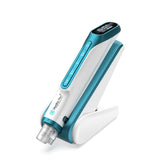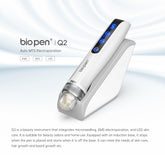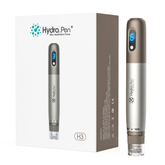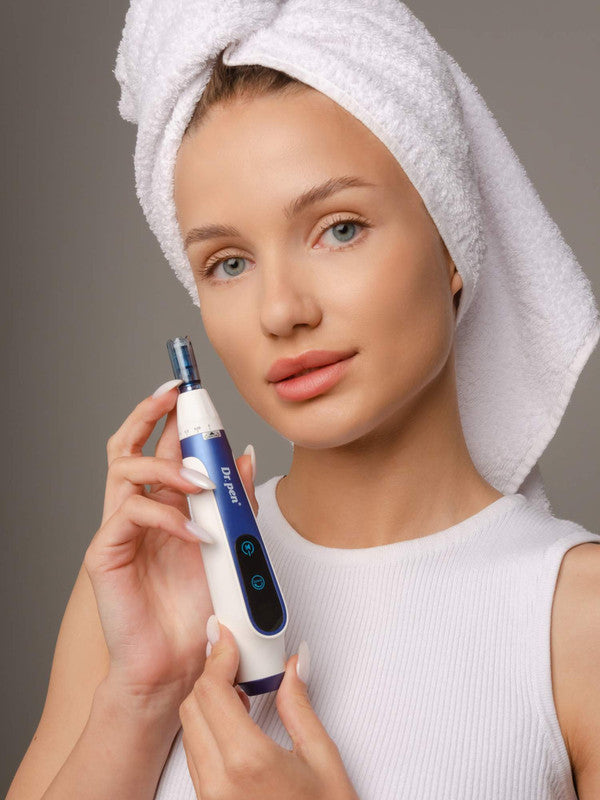exThere are ways to tackle skin problems without damaging your skin. Just remember the number one rule of skin care: Don’t pick! Picking at acne, blackheads, scabs, or other skin problems can cause open wounds or darker skin spots known as hyperpigmentation. Open wounds can lead to infections, more acne, or scars. The deeper the wound, the more likely your skin will scar.
Here are some scientifically backed ways to treat problem areas.
Acne
Acne treatment depends on how deep or serious your acne is. Overall skin care is the most important step in treating acne, but for mild acne you can use nonprescription products from your local drugstore such as:
For immediate, inflamed, and individual pimples, you can also try acne patches or stickers. These are clear, thick patches that work as spot treatments to help promote blemish healing and prevent infections. Like blister bandages, acne patches pull out the fluid, sometimes overnight. It’s best to use these before you sleep as makeup can’t cover them.
Sebaceous filaments
Sebaceous filaments are tiny, cylinder-like tubes in your pores that are whitish yellow. These are often confused with blackheads, but blackheads are actually a type of acne that’s oxidized. Sebaceous filaments can make your pores look bigger, and you may be tempted to remove them by pinching your skin or using pore strips. But these methods may have more side effects than benefits for your skin, especially if you don’t do them properly.
Overtime, you can also cause:
Another way of removing sebaceous filaments is with an extraction tool. This is a small metal instrument with a tiny circle at the end.
The safest method is to have an esthetician or dermatologist remove them for you, but you can also do this at home:
Start with a clean face and instrument.
Gently press the circle around the bump to see if the filament comes out. Be careful as excessive pressure can cause bruising and scarring.
Treat the area with toner and moisturizer after.
Always sanitize your instrument with rubbing alcohol before and after use to prevention infections.
You may also see extra benefits by applying benzoyl peroxide after washing before extraction.
Blemishes, scars, and hyperpigmentation
Blemishes, scars, and dark spots can take anywhere from a few weeks to six months to heal and fade. Immediate treatment for scars and blemishes include using makeup and sunscreen to avoid further sun damage and hyperpigmentation.
Other ingredients known to help fade scars include:
Silicone: Studies show that topical silicone can improve scar thickness, color, and texture. You can apply silicone gel for eight to 24 hours per day. Look for products with silicone dioxide listed as an ingredient.
Honey: Preliminary studies show that honey can heal wounds and scars. You may want to use honey if you’re looking for home treatment.
Vitamin C: Look for this ingredient when shopping for creams and moisturizers. Vitamin C works better when combined with other lightening ingredients like soy and licorice.
Niacinamide: Studies showTrusted Source that niacinamide can help reduce blemishes and dark spots, especially from acne. Topical two percent to five percent niacinamide is effective for people with lighter skin tones. An affordable option is The Ordinary’s Niacinamide 10% + Zinc 1% serum, which costs $5.90.
Retinoic acid: One studyTrusted Source found that acne scars improved in 91.4 percent of people who applied a combination of retinoic acid and glycolic acid. The Ordinary also has a product that’s two percent retinoid for $9.80. Use products with this ingredient only at night.
Look for products with these ingredients and add them to your routine after washing your face. Don’t forget to always wear sunscreen after application to avoid sun damage and hyperpigmentation.
Here are some scientifically backed ways to treat problem areas.
Acne
Acne treatment depends on how deep or serious your acne is. Overall skin care is the most important step in treating acne, but for mild acne you can use nonprescription products from your local drugstore such as:
- salicylic acid (Stridex maximum strength acne pads)
- benzoyl peroxide (Clean & Clear Persa-Gel 10 acne medication)
- alpha hydroxy acids
- adapalene
- tea tree oil
- Always apply sunscreen after using these products in the morning, since they can cause extra skin sensitivity.
For immediate, inflamed, and individual pimples, you can also try acne patches or stickers. These are clear, thick patches that work as spot treatments to help promote blemish healing and prevent infections. Like blister bandages, acne patches pull out the fluid, sometimes overnight. It’s best to use these before you sleep as makeup can’t cover them.
Sebaceous filaments
Sebaceous filaments are tiny, cylinder-like tubes in your pores that are whitish yellow. These are often confused with blackheads, but blackheads are actually a type of acne that’s oxidized. Sebaceous filaments can make your pores look bigger, and you may be tempted to remove them by pinching your skin or using pore strips. But these methods may have more side effects than benefits for your skin, especially if you don’t do them properly.
Overtime, you can also cause:
- irritation
- open pores and infection
- dryness
- redness
- peeling
- Topical preparations containing retinol or retinoids can help keep pores clear and clean. You may also find benefits from massaging your face with mineral or castor oil for one minute.
Another way of removing sebaceous filaments is with an extraction tool. This is a small metal instrument with a tiny circle at the end.
The safest method is to have an esthetician or dermatologist remove them for you, but you can also do this at home:
Start with a clean face and instrument.
Gently press the circle around the bump to see if the filament comes out. Be careful as excessive pressure can cause bruising and scarring.
Treat the area with toner and moisturizer after.
Always sanitize your instrument with rubbing alcohol before and after use to prevention infections.
You may also see extra benefits by applying benzoyl peroxide after washing before extraction.
Blemishes, scars, and hyperpigmentation
Blemishes, scars, and dark spots can take anywhere from a few weeks to six months to heal and fade. Immediate treatment for scars and blemishes include using makeup and sunscreen to avoid further sun damage and hyperpigmentation.
Other ingredients known to help fade scars include:
Silicone: Studies show that topical silicone can improve scar thickness, color, and texture. You can apply silicone gel for eight to 24 hours per day. Look for products with silicone dioxide listed as an ingredient.
Honey: Preliminary studies show that honey can heal wounds and scars. You may want to use honey if you’re looking for home treatment.
Vitamin C: Look for this ingredient when shopping for creams and moisturizers. Vitamin C works better when combined with other lightening ingredients like soy and licorice.
Niacinamide: Studies showTrusted Source that niacinamide can help reduce blemishes and dark spots, especially from acne. Topical two percent to five percent niacinamide is effective for people with lighter skin tones. An affordable option is The Ordinary’s Niacinamide 10% + Zinc 1% serum, which costs $5.90.
Retinoic acid: One studyTrusted Source found that acne scars improved in 91.4 percent of people who applied a combination of retinoic acid and glycolic acid. The Ordinary also has a product that’s two percent retinoid for $9.80. Use products with this ingredient only at night.
Look for products with these ingredients and add them to your routine after washing your face. Don’t forget to always wear sunscreen after application to avoid sun damage and hyperpigmentation.





















